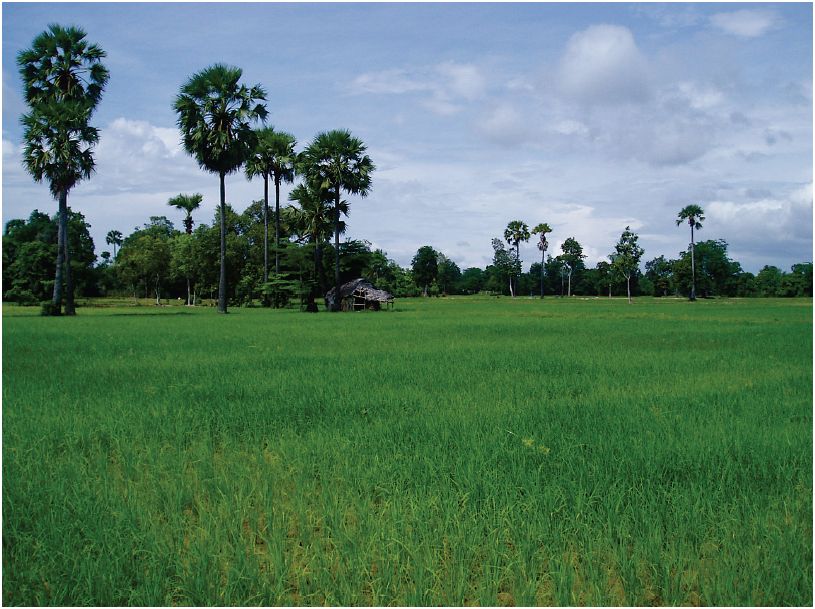Rice, while central to Cambodian food security has never really been central to the wealth of its people; its leaders perhaps but not its masses. Yapa (1998: 103) writing of Sri Lanka’s postcolonial rice centric policies argues that;
the leading actors see themselves as fulfilling an historic mission which involves the recreation of an authentic, traditional village, family-farming and rice-based Sinhalese society.
Sometime ago while writing my thesis I discovered similar fantasies of “authentic” and “traditional” Cambodian rice cultivation were being promulgated not only by Cambodia’s leaders but by leading American gourmet food writers prompting me to engage in yet another blog war, yet this time with the productive outcome of a journal article:
M. Thavat (2011). The tyranny of taste: The case of organic rice in Cambodia. Asia Pacific Viewpoint (52) 3: 285-298.
In this article I detail attempts to promote organic/fair-trade rice production by de facto organic Cambodian farmers for export to North American and European markets in order to assist poor farmers to trade their way out of poverty. The article demonstrates that instead of promoting sustainable agriculture and fair trade between developed and developing markets, organic/fair-trade projects may impose First World consumer ideals and tastes that are out of step with the larger realities of agrarian transition in Cambodia and the wider region of developing Southeast Asia.
Globally, recent environmental alarm over climate change and social alarm over growing food insecurity would seem to land squarely on side of agro-ecological farming techniques and food sovereignty movements which often hark back to authentic, traditional, family farm, rice-based systems. Yet what is missing from most of these debates and certainly in Cambodia is a wider contextual understanding of patterns of agrarian transition which continue to propel people away from rice-based livelihoods and towards more diverse income options. This is happening against a backdrop of rising rice yields but one, which is arguably not due to the the recreation of an authentic, traditional village, family-farming and rice-based society but rather a greater mix of production methods including both small scale and large scale farming.
Cambodia’s conundrum seems therefore to be one of fulfilling the illusion of the historic mission of post-war reconstruction of Cambodia’s rice-based family farms whilst simultaneously moving rapidly away from them.
 Facebook
Facebook  Twitter
Twitter  Soundcloud
Soundcloud  Youtube
Youtube  Rss
Rss 